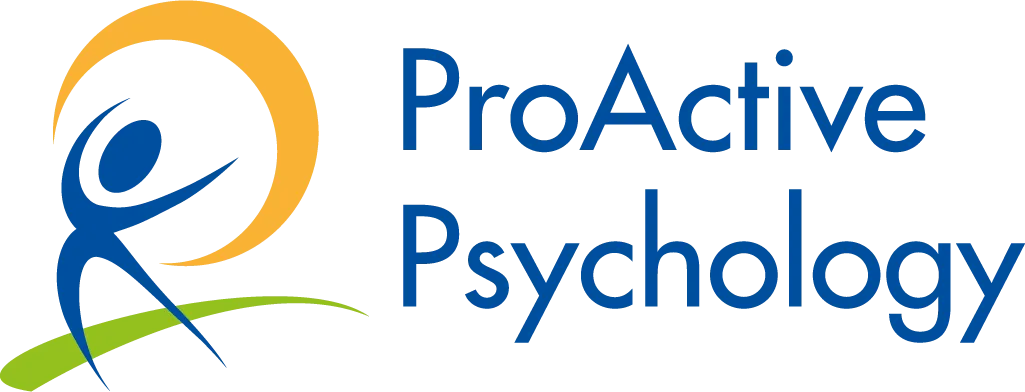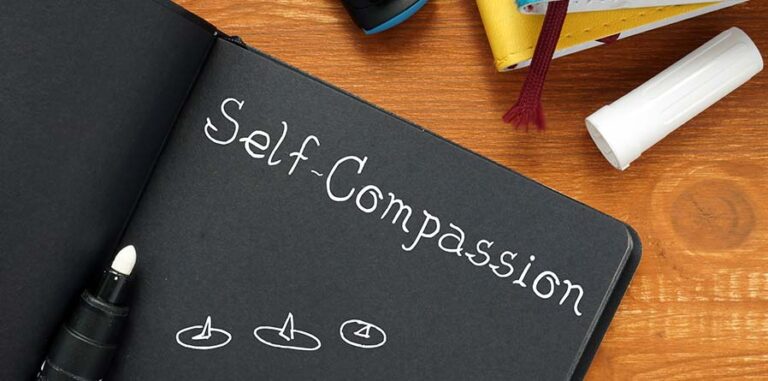
Sign up for “The ProActive Weekly” newsletter for more insights and support on mental well-being and work-life balance.
Introduction
Welcome to the second part of our series, where we will look into practical ways to manage our digital habits, including social media. Technology plays a massive role in our connected world, bringing many benefits and conveniences. But it’s also essential to maintain a healthy balance between our online activities and the real world. This article will explore practical ways to reduce digital overload, practice mindful use of technology, and enjoy activities without tech. These strategies aim to improve our well-being and strengthen our relationships with others.
Strategies for a Digital Detox
The prevalence of screens, devices, email, and social media in our daily lives has made the concept of a digital detox increasingly relevant.
As of 2024, the average screen time per day for people globally is about 6 hours and 58 minutes, encompassing various forms of screen use such as smartphones, tablets, computers, and televisions.
A digital detox involves refraining from using tech devices like smartphones, televisions, computers, tablets, and social media sites for a while. The goal is to reduce stress and prioritise social interaction in the physical world. Understanding the reasons for and methods of effectively disconnecting can contribute to improving our mental and physical health.
The necessity for digital detoxes stems from the overwhelming demands of constant connectivity. Excessive screen time can lead to digital eye strain, disrupted sleep patterns, and higher stress levels. Moreover, it impacts our ability to concentrate and diminishes our social interactions with others (see part 1 of this article series). Detoxing from digital devices allows the brain to recharge, reduces stress, and strengthens the relationships that matter most to us.
Practical Digital Detox Strategies
Implementing practical strategies for reducing screen time can be highly beneficial. Here are a few effective methods:
- Scheduled Tech Breaks: Set specific times of the day when all digital devices are turned off, such as during meal times and one hour before bedtime.
- Device-Free Zones: Establish areas in the home, such as the bedroom or the dining room, where electronic devices are not allowed. Establishing device-free zones helps encourage interpersonal communication and decreases reliance on tech for entertainment.
- Tech Curfews: Applying a tech curfew for all family members can help reduce the temptation to check devices late at night, promoting better sleep hygiene and making mornings more productive.
The benefits of periodically disconnecting from digital devices are supported by various studies. For instance, research has shown that reducing screen time can improve sleep quality, as the blue light emitted by screens can interfere with the body’s natural sleep-wake cycle. By limiting exposure to this light, especially before bedtime, individuals can enhance their melatonin production, leading to deeper and more restful sleep.

Additionally, taking breaks from screens allows for more focused attention and higher productivity when working or studying. It can also significantly lower stress levels; a study by the University of Gothenburg noted that heavy use of mobile phones and computers is linked to an increase in stress, sleep disorders, and depressive symptoms. Ultimately, a digital detox, even a short one, can significantly boost mental clarity, improved sleep, better relationships, and a healthier balance between our online and offline lives. Taking the time to disconnect is not just beneficial; it’s essential for maintaining our well-being.
Enhancing Digital Well-being
Practicing mindfulness in our interactions with technology can significantly enhance our digital well-being. Mindfulness, for example, in the context of digital device usage, refers to being aware of our tech habits and intentionally managing our engagement with digital tools so that it adds value and does not detract from our quality of life. Mindful technology use involves how, why, and when we use digital devices. It’s about being present and making conscious choices instead of using technology compulsively or out of habit. The goal is to use technology to support our tasks and goals rather than letting it use us.
Tips to Minimise Distractions
Minimising digital distractions requires a proactive approach:
- Turn Off Non-essential Notifications: Many apps seek to capture our attention through notifications. By turning off non-essential alerts, you can reduce interruptions and improve your ability to concentrate on tasks.
- Practice Single-tasking: In an era of multitasking, single-tasking can seem counterintuitive. However, focusing on one task at a time can significantly increase efficiency and reduce errors. It also reduces the stress associated with switching between tasks.
- Set Specific Times for Email and Social Media: Rather than checking email or social media sporadically throughout the day, set specific times to handle these tasks. Scheduling email and social media helps contain potential distractions and allows for more focused work periods.

Several apps and tools can assist in managing screen time and enhancing mindfulness:
- App Blockers: Tools like Freedom or Cold Turkey block distracting websites and apps, helping you stay focused during work or study.
- Usage Tracking Apps: Apps such as RescueTime or Screen Time provide insights into your daily device usage patterns, helping you understand where you might lose time to unproductive tasks.
- Mindfulness Apps: Apps like Headspace or Calm offer guided meditations to help reduce the stress associated with constant connectivity and improve overall mindfulness.
The research underscores the benefits of mindful technology use. Studies indicate that reducing multitasking with digital devices can lower stress and enhance attention and memory. For example, a study from the University of California found that participants using mindfulness practices improved memory and executive functioning skills, highlighting the cognitive benefits of focused attention.
By adopting mindful technology habits, individuals can reclaim their time and attention, enhancing their productivity and well-being in a digitally connected world. This approach helps manage current digital distractions and sets a sustainable pattern for balancing technology in our lives.
Balancing Online-Offline Life
Many of us face the challenge of maintaining a healthy balance between online and offline activities. The pervasive nature of technology can blur the lines between work and personal life, leading to potential overload and stress. However, with mindful management, technology can also be a tool that enhances our daily lives and improves our productivity. One of the main challenges in balancing digital and real life is the “always-on” culture. This environment can lead to constant interruptions and distractions, making it difficult to focus on any task or fully disengage and relax. Moreover, excessive screen time can detract from face-to-face interactions with friends and family, impacting our social relationships and mental health.

Another significant challenge is managing the information overload that comes with unlimited access to digital content. This can lead to overwhelming feelings and decrease our ability to process information effectively, impacting decision-making and creativity.
Striving for a Healthy Balance
To maintain a healthy balance between online and offline activities, consider the following tips:
- Integrate Physical Activity: Make time for physical activity every day. Physical activity can help offset the sedentary lifestyle associated with heavy digital use. Walking, cycling, or yoga can reduce stress and increase overall well-being.
- Schedule In-Person Interactions: Regularly plan face-to-face interactions with family and friends. These interactions are crucial for building and maintaining strong relationships and can provide a healthy counterbalance to online communications.
- Efficient Work Tools: Using digital tools that enhance productivity, such as task management apps and digital calendars, to manage time effectively. Productivity apps help ensure work doesn’t spill over into personal time, allowing for more explicit boundaries between work and leisure.
By using technology intentionally rather than passively, we can enjoy the benefits of the digital world without letting it overwhelm our lives.
Completely Embracing Tech-Free Activities
It is increasingly important to balance our screen time with tech-free activities that enrich our lives, strengthen our connections with others, and improve our mental health. Taking regular breaks from digital devices can mitigate the effects of digital fatigue, enhance our focus, and promote deeper personal interactions. Spending time away from screens has numerous benefits. Research suggests that reducing screen time can lead to better sleep, improved mental clarity, and reduced anxiety and depression. For instance, studies have shown that outdoor activities can significantly increase serotonin levels and improve mood, offering a natural antidote to the stress and strain of constant connectivity. Moreover, tech-free time encourages creativity and problem-solving by allowing the mind to wander and engage with the physical world in more meaningful ways.

Many engaging and fulfilling activities do not require technology:
- Reading: Books can improve brain connectivity and function, increase empathy, and provide relaxation.
- Outdoor Sports: Activities like hiking, cycling, or team sports improve physical health and enhance mental well-being by connecting with nature and others.
- Cooking and Baking are great ways to be creative, try new things, and even improve nutritional health. They can also be fun ways to engage with family members or friends.
- Crafting: Knitting, painting, or DIY home decor crafting activities reduce stress and foster a sense of accomplishment.
Engaging in tech-free activities as a family or within the community can strengthen bonds and promote a sense of belonging. Here are a few ideas:
- Board Games and Puzzles are entertaining, good for cognitive development, and can be enjoyed by people of all ages.
- Community Gardening: Participating in or starting a community garden can be rewarding because it allows you to connect with neighbours and enhance the local environment.
- Volunteering: Offering time to help out at local shelters, libraries, or senior centres can enrich your life experience and benefit the wider community.
Encouraging regular participation in these activities can help balance our increasingly digital lifestyles. It provides vital breaks where personal interaction and connection to the physical world can rejuvenate our minds and bodies, and we foster healthier lifestyles.
Conclusion
As we conclude this part of our series, let’s take a moment to consider the importance of maintaining a balanced approach to our digital lives. Throughout our discussions, we’ve explored various methods for reducing unnecessary digital use, practising mindfulness in our technology usage, and recognising the advantages of taking breaks from screens. These strategies enable us to improve our focus, cultivate stronger personal connections, and lead more fulfilling lives. Remember these tips as we navigate our digital environments, ensuring that technology enriches rather than dominates our lives.
Sign up for “The ProActive Weekly” newsletter for more insights and support on mental well-being and work-life balance.
References
- Department of Education, 2017. Use of educational technology in the classroom: Insights from a survey of American teachers. Department of Education Report.
- Christensen, M.A., Bettencourt, L., Kaye, L., Moturu, S.T., Nguyen, K.T., Olgin, J.E., Pletcher, M.J. and Marcus, G.M., 2016. Direct measurements of smartphone screen-time: Relationships with demographics and sleep. PLOS ONE, 11(11), p.e0165331.
- Stanford University, 2020. The productivity pitfalls of working from home in the age of COVID-19. Stanford News, [online] Available at: https://news.stanford.edu/2020/03/30/productivity-pitfalls-working-home-age-covid-19/ [Accessed 13 May 2024].
- University of California, 2018. Mindfulness training improves employee focus, memory, and executive function. University of California News, [online] Available at: https://news.uc.edu/2018/10/mindfulness-training-improves-employee-focus-memory-executive-function [Accessed 13 May 2024].
- RescueTime, 2022. Annual Report on digital well-being and productivity. RescueTime Blog, [online] Available at: https://blog.rescuetime.com/2022-digital-wellbeing-report/ [Accessed 13 May 2024].


